The war crimes that Team 4 Ukraine helps to record include shelling of schools, kindergartens, residential buildings and other civilian objects. Torture of prisoners, lists of “enemies of the state” and their targeted elimination also includes.
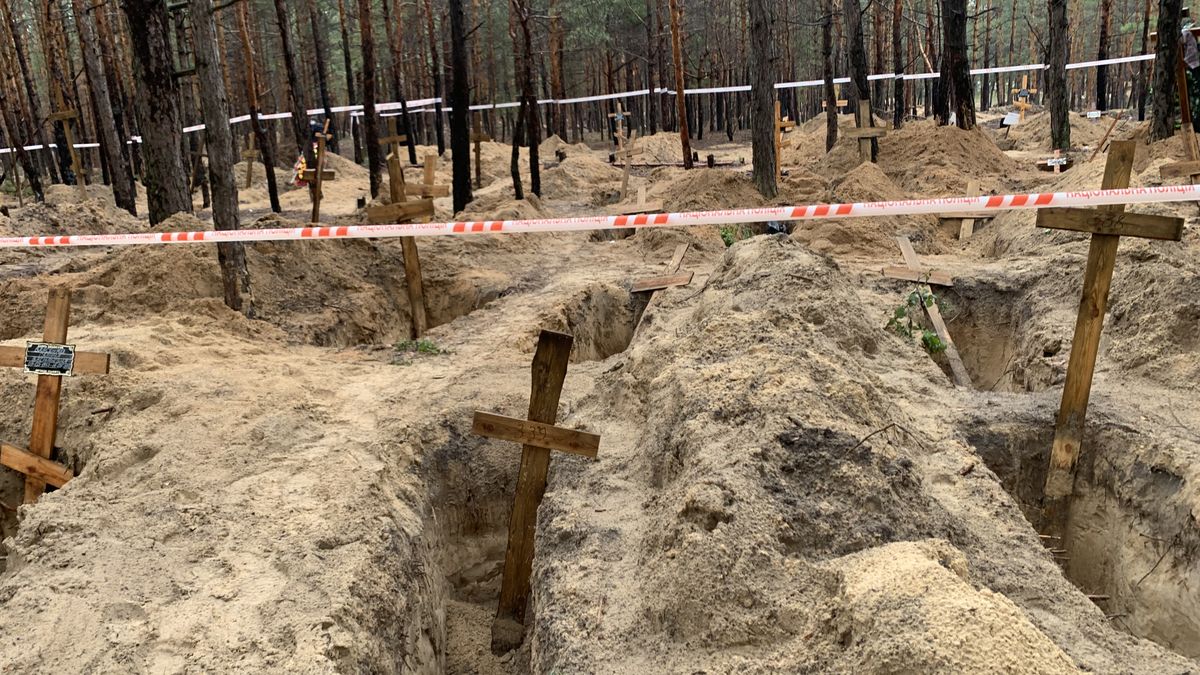
Petr Pojman was one of the first who had the opportunity to talk to witnesses and document the war crimes of the Russian army after the liberation of Ukrainian Izyum.
During many years he cooperates with the Kharkiv based organization Maidan Monitoring Information Center as a member of the Czech-Ukrainian public organization “Team 4 Ukraine“. The earlier projects were related to support of human security, cyber security or child protection. After the February invasion they focused on war crimes monitoring.
In an interview with Seznam Správy, Pojman describes why it is important to be one of the first to visit the scene, what did he found out the exhumation of the bodies of civilians in graves in Izyum, or why smaller artillery shells are often more dangerous than the S-300 missiles that the Russian army fires at civilians residents
How did you get involved in monitoring war crimes in Ukraine?
After February 24th (the date of the Russian Federation’s full-scale attack on Ukraine – editor’s note), we maintained permanent contact with our partner organization in Kharkiv. It was not always possible to get there, but we were also there in March, when we observed the hot phaze of the battle for Kharkiv. Kharkiv was not occupied as a city, although the front was as close as from Kyiv.
Russian troops came very close, were on the approach to Kharkiv. Our partner organization Maidan Monitoring Information Center started monitoring immediately on February 24, because rockets started falling there. Street battles were fought on the outskirts of the city, so-called sabotage groups entered the city to perform certain tasks, including the search for enemies.
Were they searching for enemies in this organization as well?
Yes, they tried to break into their (Maidan Monitoring) offices – both at the old address and at the one where they are now. A grenade was thrown at one. The original Russian plan probably consisted in the public liquidation of these persons, or at least their capture, which, unfortunately, happened in the occupied cities. They showed great heroism that they did not leave the city, except for trips to some short conferences in Europe, when it was necessary to share information, get some grants. In the end, it was possible to obtain funding for monitoring activities.
What does this work look like?
The police couldn’t be prepared for so many war crimes have been committed. I will limit myself to Kharkiv. At night there are rocket or artillery fire. In a few hours, it would be possible to find out where the impact took place. Firefighters are the first to arrive at the scene at night. They guard the place from the point of view of safety, so that no more explosions occur. If there is a fire, put it out, etc.

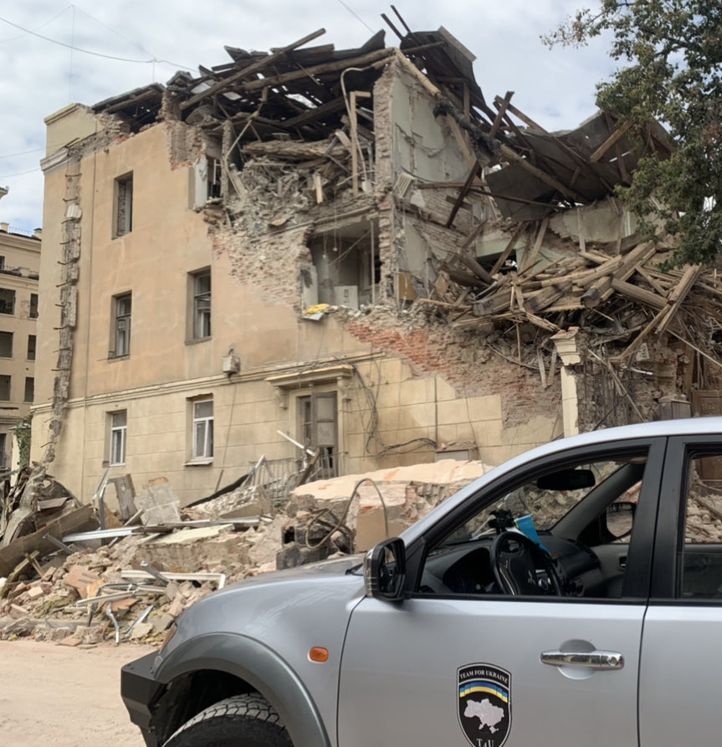
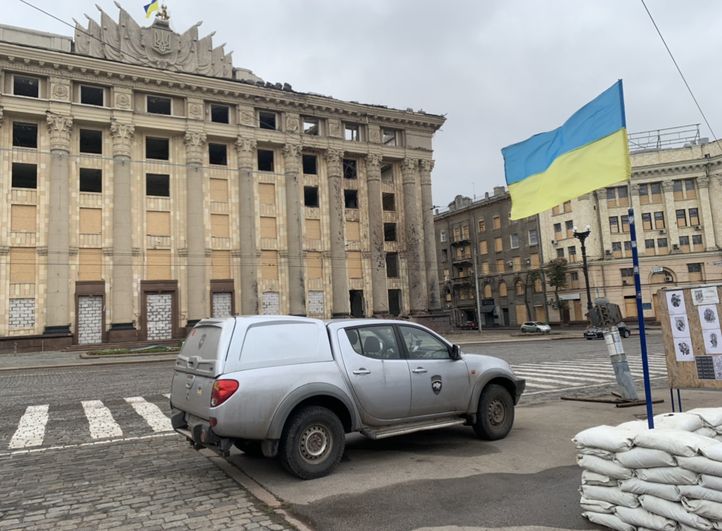
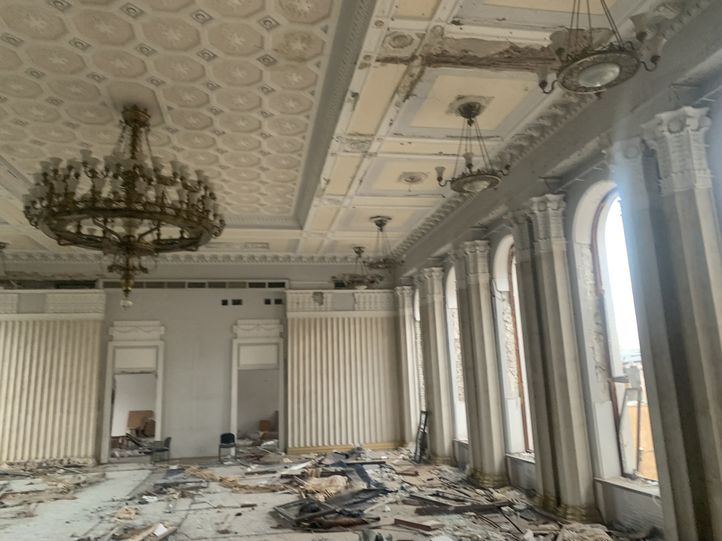
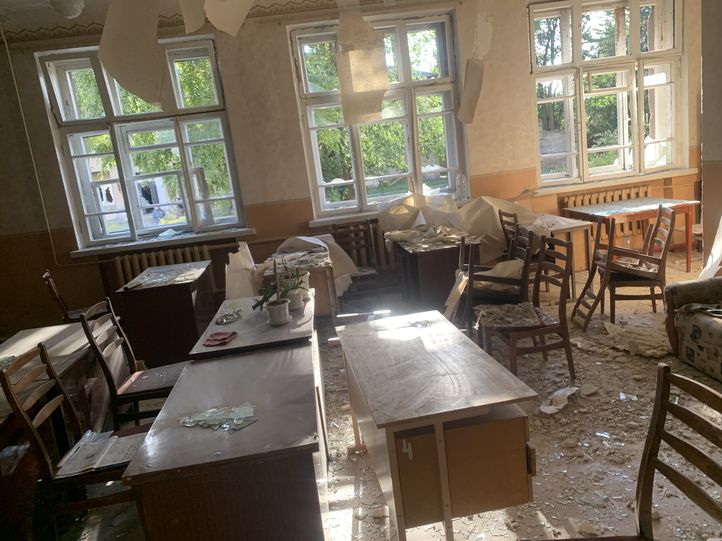
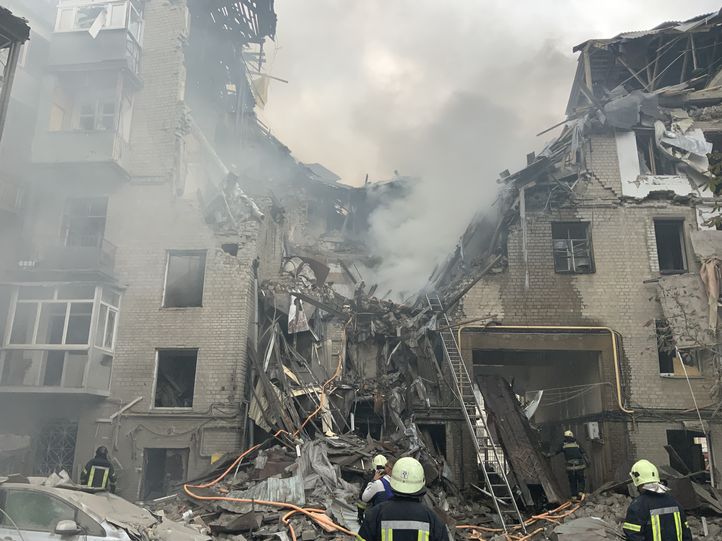
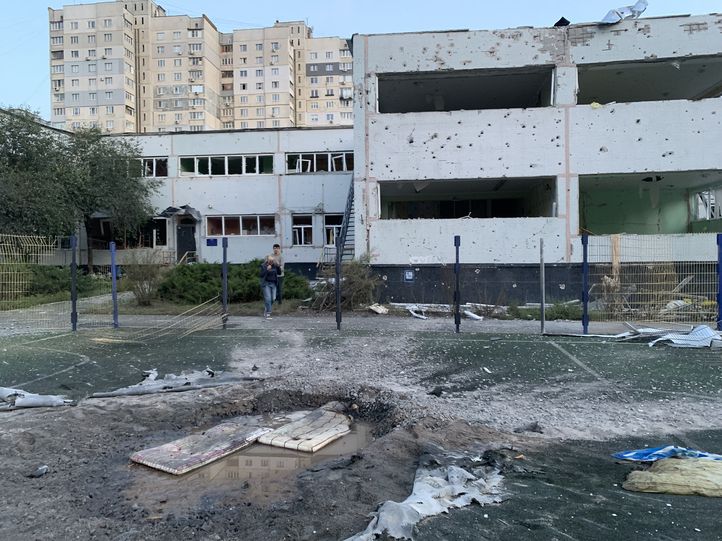
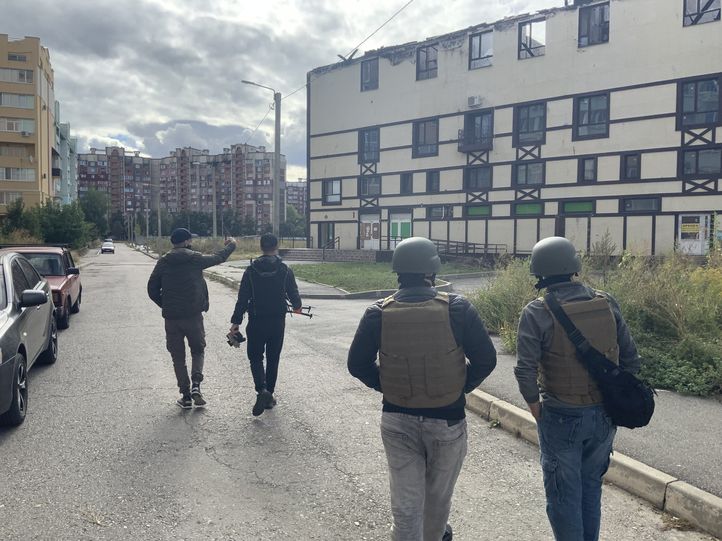
The next step is an initial survey of the scene so that in the future you can get photos and the exact location. At daybreak, the police arrive and stay as long as the situation demands. Sometimes you need patrol police to redirect traffic, etc. Then the city services come, sometimes even the mayor of the city. And the observers come, and everyone else whose task it is to monitor the situation. Then we try to summarize what happened and describe the situation in the report. We talk to witnesses, get contact information. This is a selective check. At the beginning, the police are only collecting evidence about this particular crime, but we are concerned with the context and the overall damage to the surrounding area.
Do you cooperate with the police?
All we do includes the cooperation with the National Police or SBU, depending on the city where it happens. In Kharkiv, the SBU deals with this. If the damage is extensive, it is necessary to return there several times, because during the shelling it is not possible to carry out an initial inspection – it is unavailable, impossible, too dangerous. For example, Northern Saltivka is almost completely destroyed. This means that it is not possible to look at each individual damage, but it is possible to assess the overall context of what needs to be fixed. Monitors are trying to assess the damage.
How do you do it technically?
A drone is very useful for this. The Czech Criminological Society purchased a drone with a high-quality camera for Maidan Monitoring in Kharkiv at its own expense. Now we use it to collect information, monitor war crimes. Yesterday (Sunday, October 16, editor’s note) it worked in Izyum.
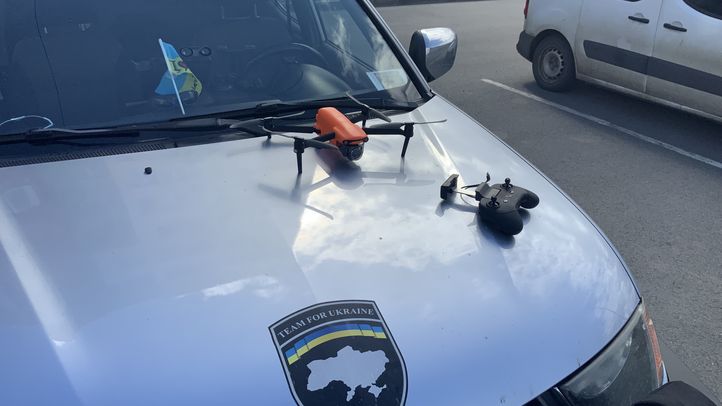
Who do you address the reports to? What happens to your reports next?
Photos are aimed for local security services, but we also have the ability to share information with the media – at least what can be shared. Sure, we can’t provide the personal details of the witnesses or the exact data on the missile hit. This can not be done, even if you are a direct witness of the missile strike, you immediately take a picture and want to share it, for example, on Instagram. Then the opponent sees, for example, that he hit not where it was aimed.
If it happens immediately after the hit, you will make it easier for the opponent. He can correct the sight and the next or usually the third shot will already hit the target. After a certain time, we have the opportunity to share photos, because it is important for Ukraine and local residents that the information is as public as possible. So that people in Europe know what is happening here.
What specific crimes have you documented?
I really did not expect that during September, almost the entire Kharkiv region would be freed from the Russians. I must say that I was pleasantly surprised. This allowed us to work in newly liberated areas, which is very valuable from a monitoring point of view. You approach the witnesses, the place where the battles took place, when the traces are still fresh. And when people are not yet tired of the same questions that journalists constantly ask when they come there for the 650th time. We were one of the first or the very first to talk to them. But it was only at the end of September.
Usually, no one slept in Kharkiv at night because the rockets woke us up. It usually happened at night, around midnight or early in the morning, in other words, still in the dark. When an attack took place, with the help of various sources, local journalists and security forces, we assessed where the strike might have taken place. Mostly, these were strikes somewhere in the city center or on some critical infrastructure.
What destructions do you document most often?
Very often we encountered strikes from S-300 missiles, which were originally air-to-air missiles, surface-to-air missiles, but they can also be used in surface-to-surface mode. In most cases, Kharkiv was shelled by S-300 missiles during August and September. The more expensive Calibers and Iskanders were used earlier, at the beginning of March. So, for example, the central administrative buildings and some other objects were hit, but in our cases it was most often the S-300 missiles plus some MLRS. Paradoxically, when the rocket is much smaller, it does more damage because it actually explodes above the ground. There were also several cases of projectiles hit by long-range 2C7 “Pion” cannons. It carries 60kg of weight and it will do a lot of damage as it will also explode right above the ground or when it hits the surface.
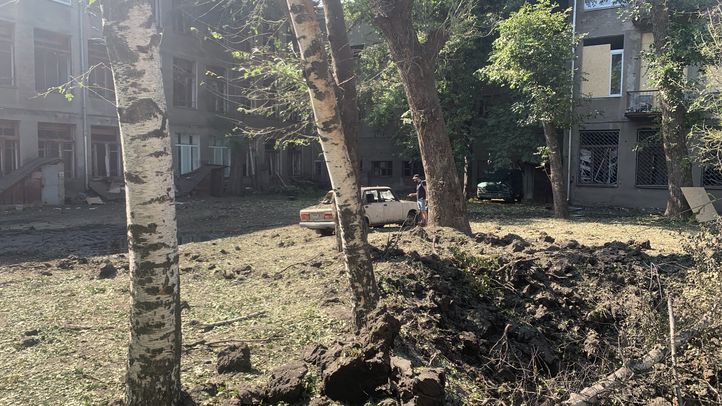
Kindergartens, schools… Are the Russians targeting civilian objects?
In Kharkiv, we often witnessed targeted strikes on kindergartens, schools, fire departments, etc. Monitoring is important here – we see the wider context, we can make certain statistics. In addition to media production and information gathering for local security forces, we also make various exhibitions out of it. At the ministerial meeting within the framework of the Czech presidency, for example, there was a collection of our photos with a description of the locations in Kharkiv. For a person who does not have the opportunity to visit there in person, the photos will give an idea of what it looks like there.
The Czech Republic has joined the criminal prosecution of war crimes, which are conducted by the High State Prosecutor’s Office in Prague. Do you work with them?
We do not cooperate with the prosecutor’s office, but directly with the Czech police. We provide information, photos, videos, reports. We help to contact witnesses who are in the Czech Republic. Especially at the beginning of the war, we helped with the identification of witnesses who were in the territory of the Czech Republic.
What kind of witnesses are these? What do they describe?
People who fled Ukraine and witnessed war crimes can submit their testimonies through an online form, which is still available today. In the beginning, these were text documents that could be filled out in Czech, English, Ukrainian, or Russian. If we knew of someone who had a valuable testimony, we helped them fill out the form. Anyone who actually witnessed a war crime is invited to an official hearing. This should be done formally because an interview with someone who is not part of the process is not evidence.
Is it possible to document war crimes in this way?
It turns out that the people we have in the Czech Republic escaped mostly in time. Their testimony was usually only partial. Most of the victims are on the territory of Ukraine, and there they are, of course, interrogated by the police. But those fragmented episodes are quite difficult to investigate.
If an international tribunal is created, the number of cases of torture or rocket attacks on civilian objects is such that they will have to be pieced together from a pile of small parts. Witnesses located in the Czech Republic can be of great importance. If you wait, people will start to forget.
For example, we know that some people may not necessarily be witnesses to war crimes, but they are witnesses to the history that happened in that area. Some managed to escape through Russia. How was the road, what problems were encountered on the way… Very often these are war crimes, because if it is a filtration camp, for example, when a child is separated from its mother, then the mother is imprisoned, and the child is sent for re-education, this is already a war crime. I, on the other hand, have experience working with a family who described their journey to the Czech Republic via Russia, but they were lucky enough to avoid any significant inconvenience.
What kinds of war crimes have you faced?
In Kharkiv, we are talking about the bombing of civilian objects, primarily schools, kindergartens, and power plants. It’s basically there every day. This does not surprise us. If you go to the liberated territories, the palette is even wider there. There was, of course, bombing, even from the air. These are not just grenade launchers and Grad systems, but a much wider range of weapons. Next – about torture, about people who died as a result of the horrors of war. A witness at the cemetery in Izyum described to us that an elderly woman died because her relatives were not allowed to take care of her, so in fact she died of lack of care, hunger, dehydration, lack of medicine.
You witnessed the exhumation of the graves of peaceful victims in Izyum. What conclusions can be drawn out of it?
Of course, you can’t tell clearly what the cause of death was by looking at a body during its exhumation. You can guess: wasted, maybe hungry. If a person has not been given medicine, doctors usually find out about it only during an autopsy. And only at the first cemetery, 446 such cases were identified.

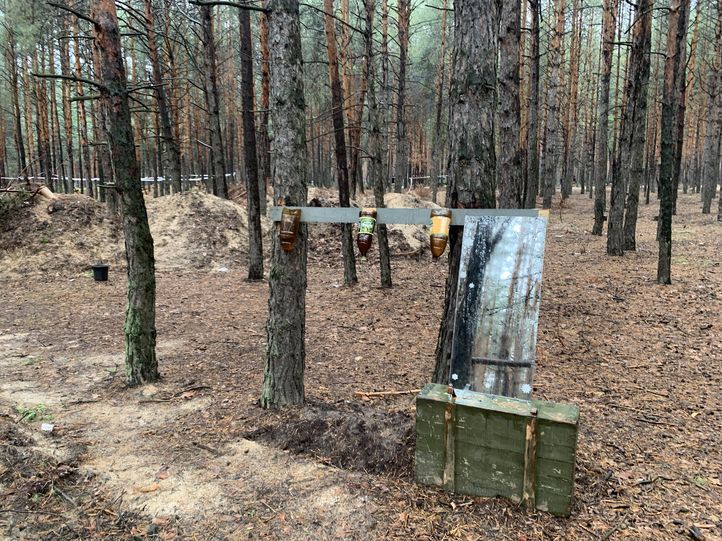
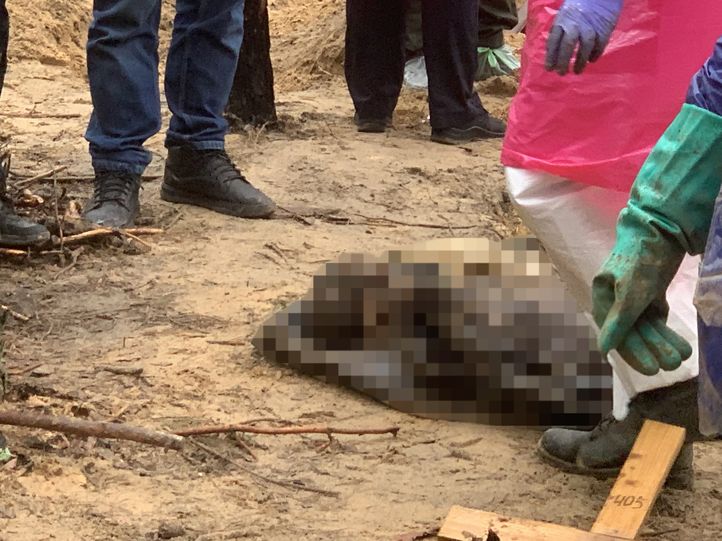
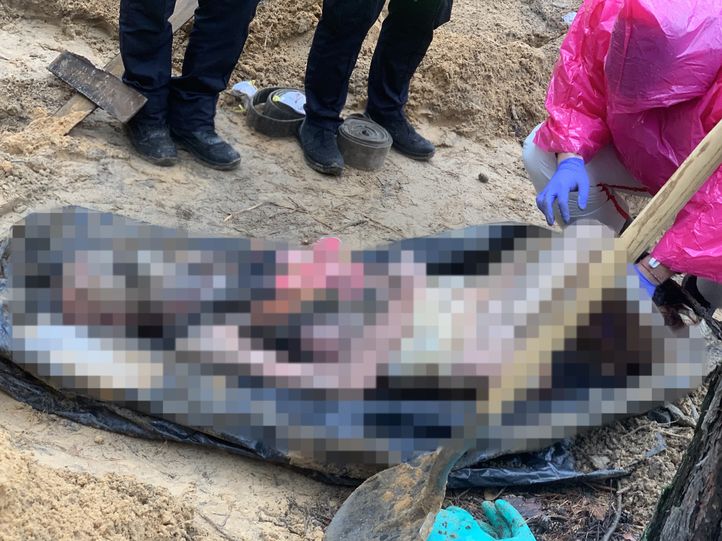

A sheet of paper with a name on it. What can be understood from the exhumation of bodies in mass graves?
I was at the exhumation of the first burial ground. I don’t know if I would call them mass graves – they were more or less marked. Now more graves are being dug up, maybe they are still working.
They probably wanted to disguise the first burial ground as the one that is already there. They expanded it. It is true that more bodies were thrown into some graves, but don’t think that it was one big pit. This was usually not the case here. I think in one case yes, but mostly it was separate grave for one body, sometimes more.
How did the exhumation and identification go?
Usually there was one body in the sand at a depth of about 70 cm. Sometimes not marked, making identification difficult. Sometimes the body was in a plastic bag, and you could see that someone had thrown in a piece of paper with a name and address on it at the last minute for easier identification.
Some of the bodies had been there for up to 6 months, so they were in a very late stage of decomposition – basically just bones. It was difficult to find any traces. But when there was a piece of paper, the police read using the camera, which made identification easier.
I imagine some grandchild, brother or relative throwing the victims there. These are truly terrifying scenes. And there were about 500 such cases that we were able to observe. On September 23, the exhumation of the first burial place was completed, but then it continued further. There was our second group, I still have to talk to those who did the exhumation.
Torture rooms are also documented in Izyum and other occupied cities. Have you seen them with your own eyes?
There were torture chambers in Izyum, but I didn’t visit those. It was very fresh. I saw such chambers in Trostyanka, Sumy region. Also, torture does not always require a torture chamber. We had a witness who described being tortured outside because he looked at someone the wrong way. And explaining how the Russian soldiers treated him, he stood on his knees for several hours.
The second witness said that during the occupation he was in prison twice, he was released only on September 9 in connection with the deoccupation of Izyum. We talked more about torture with people in Trostyanka.
How was it there?
A torture chamber, traces of blood, etc. were found in the underground floor of the local station. The police experts, after seeing the photos we took, said: “Yes, it’s clear from the traces on the wall that people’s hands were tied behind their backs, because there are traces of blood from the shoulder, from the head.”
At this station, we then met a man who works as an electrician in the utility service. He said that when the Russian army was there, they detained him and locked him in that torture cell. He had to undress, they were looking for a tattoo that would confirm his membership in the “Nazi” battalions – a trident or some slogans, which are fashionable in Ukraine. He had no such tattoos and gradually managed to convince the torturer that he was an electrician for the local utility service and that they needed his services, because if there was no electricity, it would be cold. It was in March, when it was still cold. After about six hours, he was released.
Are these crimes punishable?
In the center of the Sumy region, Sumy, the local prosecutor’s office and the police were active all the time. The city was not completely occupied, so it is easier to gather information there than, for example, in Izyum. One military man has already been convicted in Sumy, he is in a pre-trial detention center. Everything is different from city to city, but in Sumy we were at the prosecutor’s office, and I have to say that I respect them very much. They worked even during the hot phase of the war in an area.
Is it possible to say that the Russian army systematically commits war crimes? Is it top-down?
It has been proven that lists of enemies of the Russian state, enemies of the DPR and LPR were created a long time ago. These lists include the majority of representatives of the local militia and the army. The ones that are publicly known, public organizations… I know many people who appear in the lists.
Those lists were apparently used in the occupied territories not only by the army, but also by units of the FSB in order to find people and destroy them, imprison them, kidnap them, etc. It can be proven, almost all witnesses in all liberated territories say so. My team and I have already visited the liberated territories and absolutely everyone confirms this. So that was the plan.
Then there are things that don’t go according to plan. The fear that the Russian army is supposed to induce among the civilian population is part of a plan to undermine the morale of the Ukrainian people, and the Russians are not succeeding in this at all. But, in addition to the persons on the list, those who may pose a danger are screened out. After that, it is enough for them to find your photo with the soldiers of the Ukrainian army during the search, and this can be a reason to eliminate you. Then it depends on which commander, which soldiers you meet. The Russian army is large and consists of different people.
Is there a difference between commanders and ordinary soldiers?
The majority of Russian commanders are, without a doubt, deviants who probably would not even pass psychological tests when joining the army in the Czech Republic. The goal of the Russian command is to put such people in command positions, because, from their point of view, this is an effective way of conducting battle. But among the ordinary soldiers – and this is confirmed by the witnesses – there were decent people who shared resources, who did not abuse their position unnecessarily. The boys told us that they communicated with them quite normally. They shared food rations etc. with the children.
In his book about the Chechen war, the Russian writer Mykola Lilin describes that soldiers and their commanders quite often mutilated the bodies of dead or tortured enemies. Is there really such a practice in the Russian army?
I haven’t heard of corpses being mutilated, but we saw during the exhumation that some were tortured before they died – they had strangulation marks or their hands were tied. There was a case of a soldier who probably did not die in battle but was executed based on the damage to his skull. Only an autopsy will establish this for sure.
And this is very important: someone says that the Ukrainians did it. This is nonsense, of course. When the bodies are on the street, it is visible on all the satellites that are now aimed at Ukraine. They were during the occupation and remained in the same places after it – this was evident in the Kyiv region.
We were one of the first to arrive in Izyum. Witnesses said that the bodies were buried somewhere, that they did not know where. Then the burial ground was found. I happened to be in the group that was at the exhumation on the last day. We saw how the bodies were dug up one by one, we saw everything. Everything we dug up we could take off, walk everywhere, nothing was hidden from us.
How many people were there?
Dozens and dozens were involved. Some dug in special masks. Then the police, who filmed it, then those who conducted the search and told what they saw on camera. Any manipulations were impossible.
Also, since the bodies were in the sand, they were relatively well preserved. Of course, after six months, not much will be left there, but on fresh bodies there were often traces of strangulation and torture, which the first examination revealed. And then the autopsy will reveal the cause of death.
Do Ukrainians also commit war crimes?
I don’t know about that. We have no information that Ukrainians mistreated the prisoners. Russian propaganda will use this, so it is not even in their interests.
How big a role do drugs and alcohol play in the behavior of Russian soldiers?
Witnesses say that they met soldiers who seemed to be under the influence of some kind of heavy drugs. Not just alcohol, but something really heavy. It is mentioned in most conversations. We found empty bottles and some syringes in the trenches of the Russian army in Malia Rohan, and it fits into the context.
Further investigation will show what kind of drugs it is, how much, etc. But many witnesses speak about it. Sometimes it also appears on video. But I haven’t seen it in person and haven’t heard from witnesses, so I’m somewhat skeptical about it. I am talking more about what I have seen personally. This is the principle of our monitoring – you work not so much with indirect information, but with what you yourself saw or heard from direct witnesses.
The violence of Russian soldiers is a result of the conditions created by Russian society, says Pojman
Young people in many Russian regions not only suffer from incredible poverty, but many children are exposed to violence starting at early age. I talk to my fellow criminologists from Buryatia and point out to them the literally catastrophic state of affairs in this area since at least 2009. The level of violence we face in Russia’s socially isolated regions, which nevertheless occupy most of its territory, is incredible.
Criminal subcultures have been cultivated in Russia for a long time, and for some social groups, crime is seen as the only quick way to success. Violence has become a common form of communication. This approach is very clearly manifested, for example, in the youth movement AUE (Arestantskiy Uklad Edin), which is the ideology of youth gangs. In Czech it can be translated as “the jailbird common custom” or “the common fate of the prisoners”. Children growing up in such a “culture” and socially depressed environment often become victims, only to become teenage criminals. And they continue the cycle of violence.
In the similar way, young people are indoctrinated through de facto state organizations, such as the Nashi (Our [people]) political movement or the Yunarmiya (Youth Army) units preparing for military service. And these movements were also function in the occupied territories. People from Yunarmiya were often seen in Donetsk. In addition to formalized “elite” associations, we observe entire social strata and depressed regions where there is no hope of improving living conditions. Buryatia is just one of such regions. In Ukraine, we also meet Tuvans and representatives of other Siberian and Caucasian peoples in the ranks of the Russian army.
These people are mostly influenced by Kremlin propaganda. Some believe in the supremacy of Russian imperial nationalism, others in the threat to Russia from NATO. However, most fight for the money and the opportunity to rob and steal. They believe that this is the only way to get quickly what they could never get without crime. Most of them live below the poverty line. If in the EU or the Czech Republic we are talking about socially isolated settlements, then in the Russian Federation we observe entire districts, cities, and classes.
From these classes and communities, members are recruited into organized crime groups or private military companies, which then, under the control (cover) of the Russian security forces or military forces, advance the interests of the main actors. For a long time, it was mainly about the interests of corrupt people and the goal was profit.
However, no later than 2013, we note that these structures are involved in financially unprofitable operations and that the Russian leadership is also using them for ideologically motivated violence in a hybrid war, and now a full-blown war against Ukraine and the entire free world.
The number of individuals grown up in the deviant environment described above is very large, and it is precisely such individuals who have reached commanding positions in the Russian army. This is the intentional practice, not some random choice! The situation we are witnessing today provides an answer to the question of why the Russian leadership purposefully cultivated violent subcultures.
These groups of marginals and bandits are part of the whole Russian tactics and strategy, which is based on a large number of attacking soldiers, high casualties and violence against the civilian population. And this is not only violence in street fights, but also artillery and air strikes on civilian objects, including kindergartens and hospitals. Thus, the violent subculture apparently affects even the most elite units of the military, including highly qualified pilots.
Who is Petr Pojman?
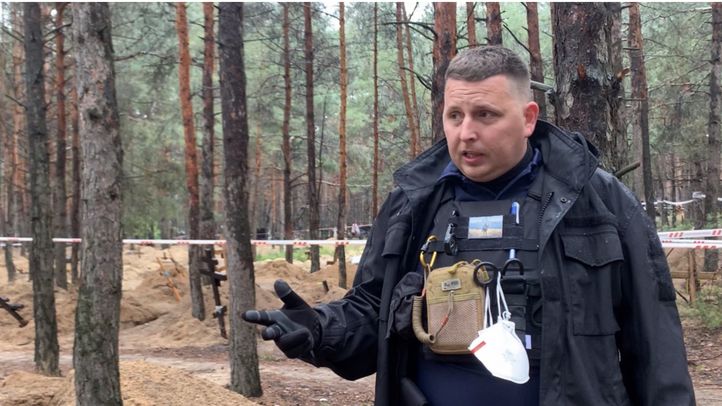
- Doctor of International Territorial Studies at the Faculty of Social Sciences of Charles University in Prague, a founding member of the Czech Criminological Society and a member of the St. Petersburg Center for Deviantology.
- The author of research and publications on organized crime in Russia and Ukraine, since 2010 a consultant to commercial, non-governmental and state bodies and law enforcement agencies of the EU.
- Deals with the issue of human trafficking. As a member of the monitoring mission of the Organization for Security and Cooperation in Europe (OSCE) or the EU, monitored elections in Belarus, Ukraine, Azerbaijan and Sierra Leone
Photo by Petr Poyman. The interview was conducted by VOJTĚCH GAVRINĚV. Translation from the Czech language. The original publication is here
Ця публікація була створена за фінансової підтримки Європейського Союзу. Вміст публікації є одноосібною відповідальністю DW Akademie, ГО “Львівський медіафорум”, Програми Медіафіт для Південної та Східної України та не обов’язково відображає погляди Європейського Союзу.




